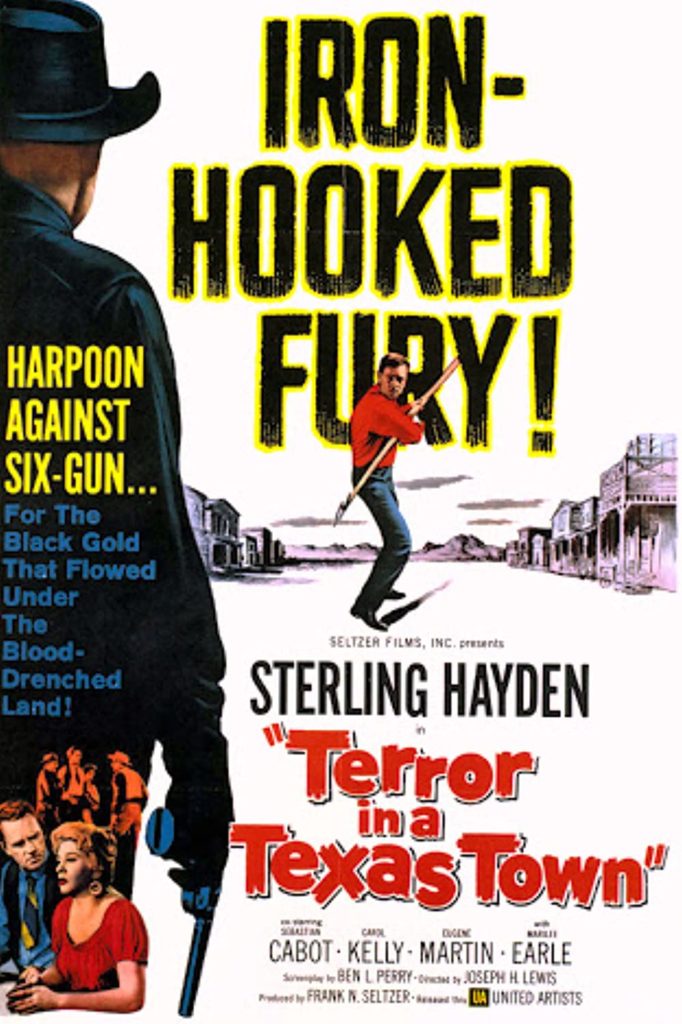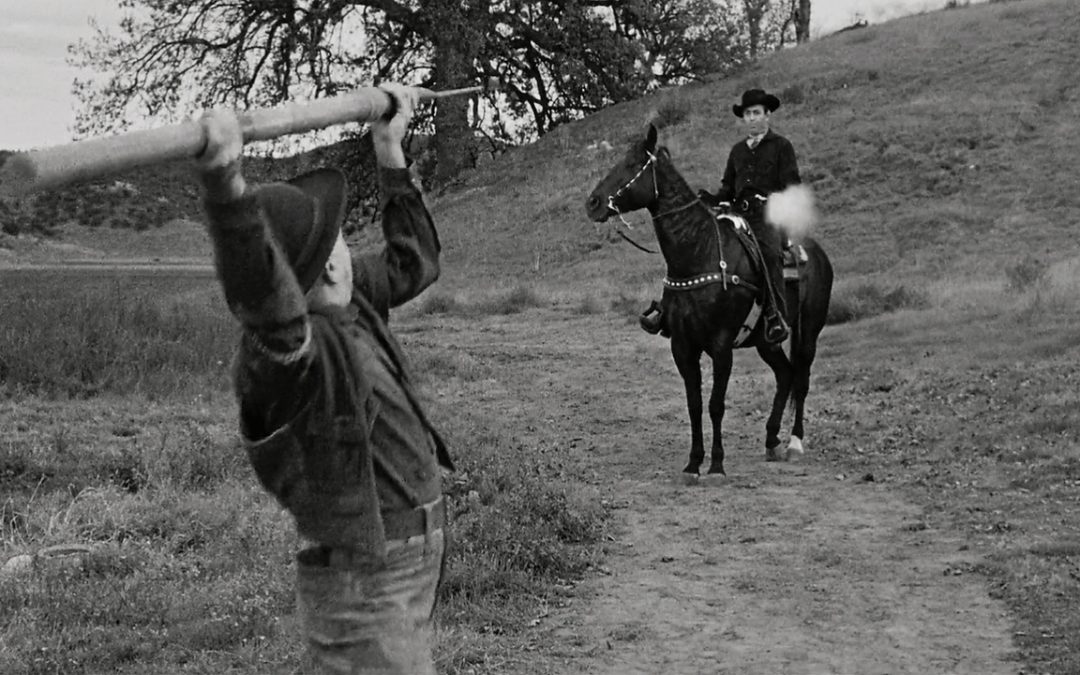Each Monday, I continue to share Western movie reviews. I have now launched a podcast about the making of Westerns and the overall filmmaking process. Click here to listen.
Week 150: Terror in a Texas Town

This Western from director Joseph H. Lewis, known mostly for his work in the Film Noir genre, is a unusual one for several reasons. It’s apparent from the start that we aren’t watching a movie common to this era as he opens the film with a teaser of the film’s climactic battle. What other Western of the 50s begins at the end? What follows is one of the most experimental opening credit sequences of the genre featuring shots we will see throughout the picture.
The differences don’t end there. There is no female love interest for our hero, a rare choice. Two female characters are associated with the villains and though one isn’t quite loyal, the filmmakers don’t do the typical Hollywood thing and push her into the arms of the protagonist. No, the lean screenplay doesn’t indulge much, offering a straight-forward gritty experience.
But I also had some issues with the script. For one, it makes no sense when Nedrick Young (terrific as Johnny Crale) becomes so fixated on one of his victims being not afraid to die. Wasn’t his first victim in the movie also not afraid to die? It certainly seemed to so me and this felt like the creatives injecting an idea into the narrative without considering the logic of its characters. I also think the film would benefit from losing Sebastian Cabot’s “secretary”. Having each villain with a pretty girl is unnecessary and muddles the effect of Carol Kelly’s character.
Sterling Hayden is good in the movie but it also feels like he isn’t challenged much, unlike his performance in The Last Command. The sailing connection no doubt makes this a character who Hayden, an avid sailor, could relate to and that plays well but I do wish they’d dropped the accent (and kept it only for his father). His natural voice is so strong and the inconsistency of his attempt at sounding Swedish is often distracting.
Overall, it’s the visuals in this Western that remain its strongest element. Though I haven’t seen his other work in the genre yet, I suspect Joseph H. Lewis put more emphasis on his shots than the story of his films. Perhaps he felt more comfortable communicating narrative ideas through these shots, something that is on great display here with several stunning tracking shots, deep focus three shots, and unusual compositions. None of these are just for show, all adding up to tell an unusual Western tale that isn’t perfect but is certainly unforgettable.
Watched on Criterion Channel.


